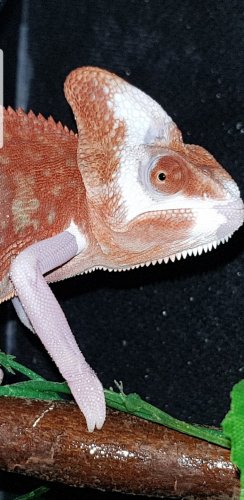Bigsky
Established Member
True. As I have stated before, inbreeding/backcrossing can result in expression of non-dominant genes. These recessive characteristics may be either beneficial or harmful.True/false statement. Mutations are expressed more often when inbreeding. These genetic defects are dormant due to either recessive traits or are polymorphic. Typically, these dormant mutations will not be expressed as it requires both parents to carry the “defect”. Inbreeding increases your chance of mutation because both parent animals are more likely to carry an in expressed recessive gene. Albanism is a good example of this. For a breeder, this means expressed mutations may appear over less generations, costing less money and taking less time. The issues many have with this are the overall health of the offspring. Though they appear beautiful, they may have deminished health. I doubt little has been done by way of research in genetics for any reptile, chameleons in specific. Still, not saying I’m completely against it, but i would prefer the breeder try outcrossing sooner than later. This would result in the same mutations, more robust/healthy offspring, just over a longer timeline. Again, this is only an example for recessive genes. Other things may be expressed by continually breeding chameleons with certain valued traits though not related.
Example: in humans, brown eyes are dominant. Somewhere, sometime, there was a mutation for blue eyes. This characteristic was recessive, and not expressed until two people, obviously related, produced the first blue eyed child.
There is a factor called highbred vigor in livestock. So, an angus x Hereford cross produces stronger calves than purebred.
Obviously, this example of inbreeding in chameleons has resulted in an interesting new strain that would not have occurred otherwise.
Possibly there may be negative effects also. We will see.





